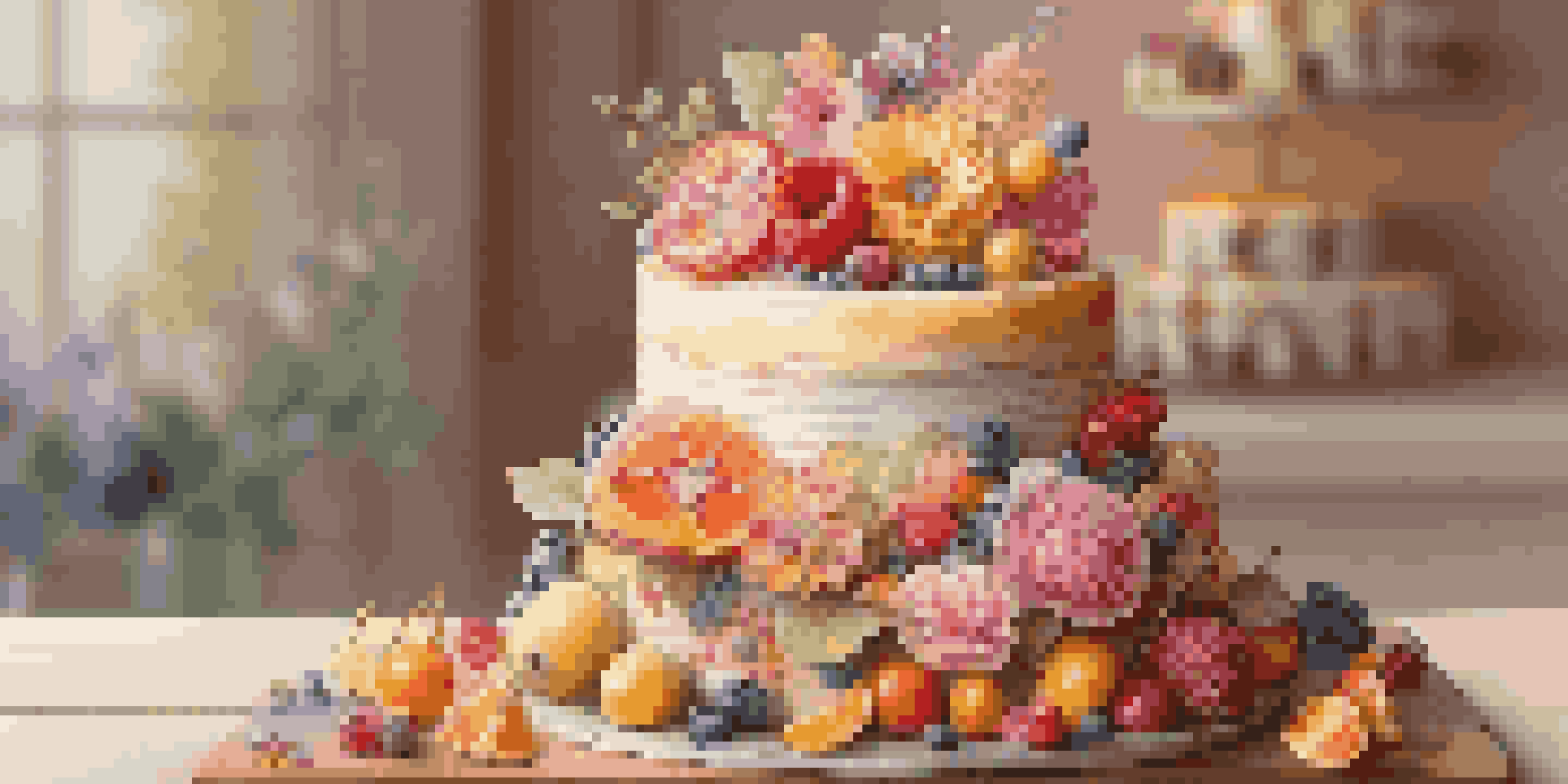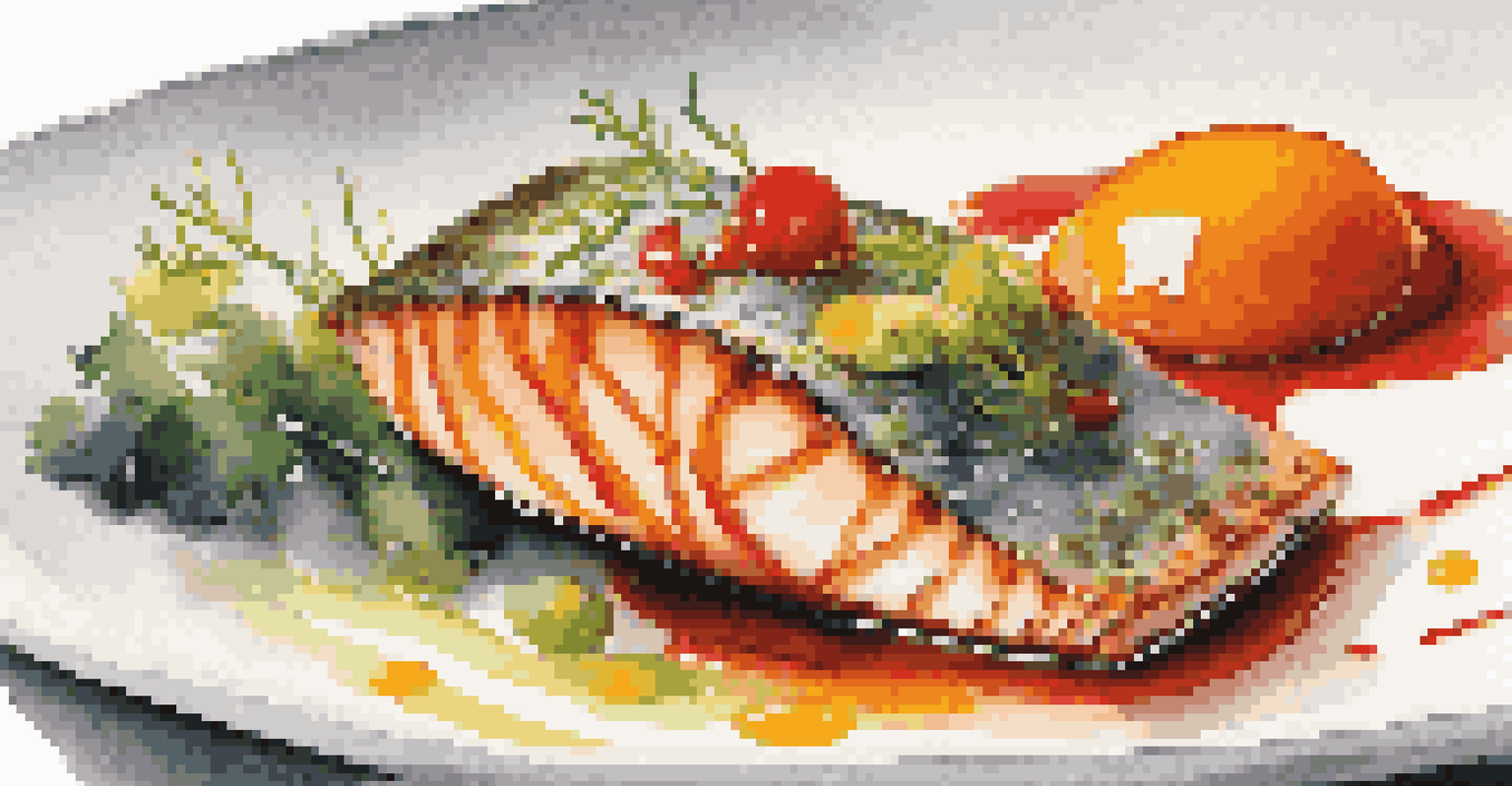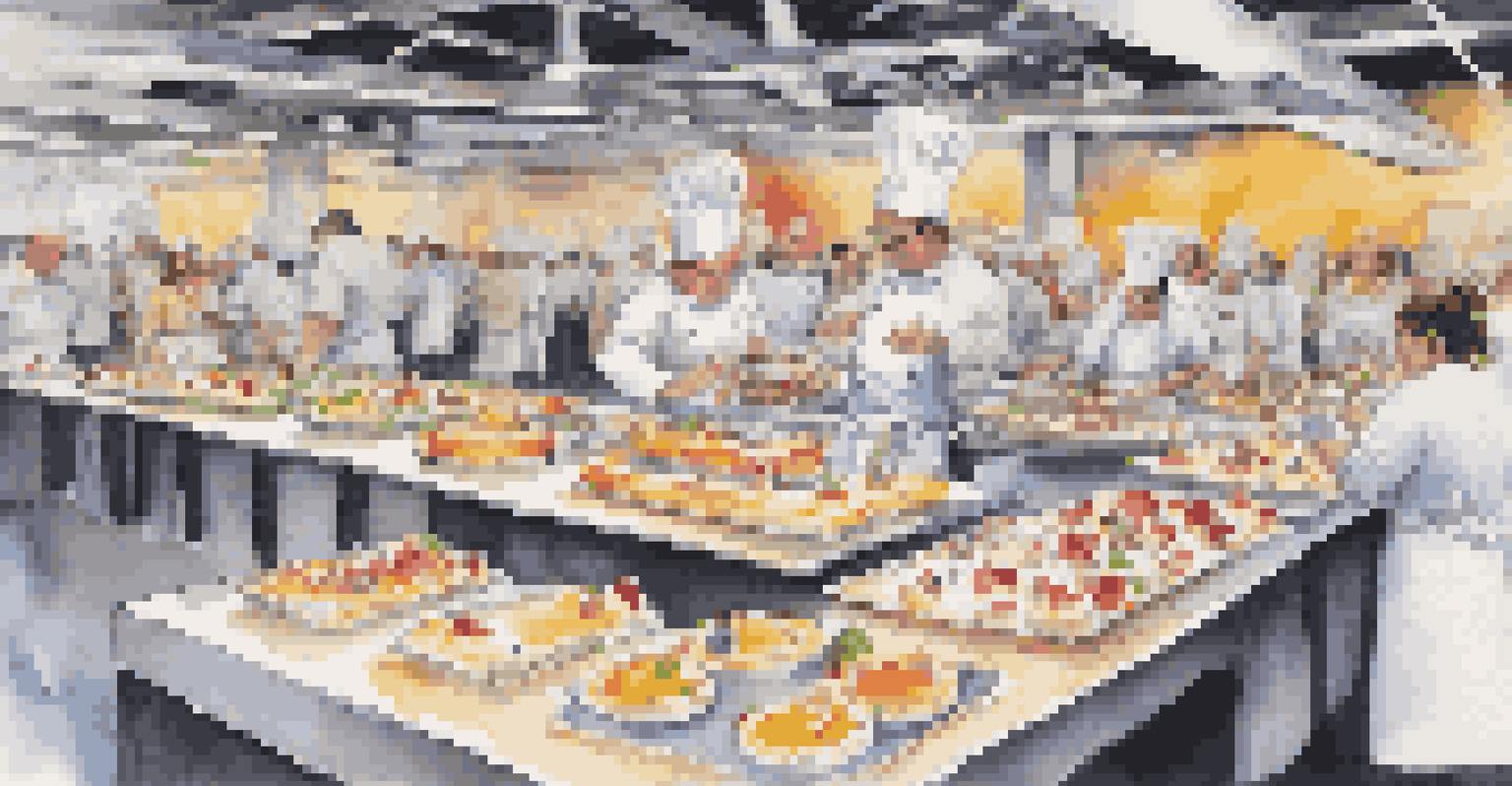Food Art Competitions: Showcasing Talent and Creativity

The Rise of Food Art Competitions in Culinary Arts
In recent years, food art competitions have gained tremendous popularity, drawing in chefs, home cooks, and food enthusiasts alike. These events showcase not just culinary skills but also creativity, transforming ordinary ingredients into stunning works of art. It's fascinating to see how these competitions have evolved from simple cake decorating contests to elaborate showcases featuring intricate sculptures and themed displays.
Food is art, and art is food. Every plate tells a story.
These competitions often highlight a variety of culinary disciplines, from pastry arts to savory dishes, allowing participants to express their creativity through multiple mediums. Each event serves as a platform for chefs to push boundaries, experiment with flavors, and engage with food in a whole new way. The excitement of competition fuels innovation and inspires others in the culinary world.
Furthermore, the inclusivity of food art competitions encourages participation from diverse backgrounds, making it a melting pot of cultures and techniques. This not only enriches the competition experience but also broadens the audience's appreciation for global cuisines. It's a celebration of creativity that transcends geographic boundaries.
Judging Criteria: What Makes a Winning Dish?
Judging criteria in food art competitions can be quite stringent, often focusing on various aspects like presentation, creativity, and taste. Judges evaluate the visual appeal of the dish first, considering how well the artistic elements come together. A stunning presentation can instantly captivate both the judges and the audience, making it a crucial factor in the scoring process.

Additionally, creativity plays a significant role; judges look for originality in design and concept. Participants are often encouraged to think outside the box, using unconventional materials or techniques that set their work apart. This emphasis on innovation ensures that each competition is filled with unique and inspiring creations.
Food Art Competitions Inspire Creativity
These events encourage both professional chefs and home cooks to push their creative boundaries and explore new culinary techniques.
Lastly, taste cannot be overlooked in these competitions. Even the most visually stunning dish can fall flat if the flavors don’t deliver. This three-pronged approach to judging ensures that winners not only create art but also provide an unforgettable gastronomic experience.
Famous Food Art Competitions Around the World
Around the globe, there are several renowned food art competitions that attract top talent and avid foodies. Events like the World Chocolate Masters and the Cake International competition showcase some of the best pastry chefs and cake decorators. These gatherings not only highlight impressive skills but also serve as inspiration for aspiring chefs and cake enthusiasts.
Cooking is like love. It should be entered into with abandon or not at all.
In the United States, competitions like the Food Network's 'Chopped' challenge participants to create unique dishes under pressure, combining art with culinary expertise. Such competitions often emphasize creativity and adaptability, pushing chefs to think quickly and innovatively. The thrill of competition adds an extra layer of excitement for both participants and viewers.
These competitions also promote a sense of community among participants. Chefs often share tips, techniques, and encouragement, fostering a supportive environment. This camaraderie is a beautiful reminder that the culinary world thrives on collaboration as much as competition.
The Impact of Social Media on Food Art Competitions
Social media has dramatically transformed the landscape of food art competitions, allowing chefs to showcase their creations to a global audience. Platforms like Instagram and TikTok provide a stage for culinary artists to share their work, garnering instant feedback and appreciation. This visibility can elevate a chef's career, attracting opportunities and collaborations that may not have been possible otherwise.
Moreover, the viral nature of social media can create trends in food art, encouraging chefs to experiment with popular styles and themes. For instance, the rise of intricate cake designs and edible floral arrangements can often be traced back to viral posts that inspire chefs worldwide. This constant exchange of ideas fuels creativity and pushes culinary artists to innovate.
Judging Criteria Balances Art and Taste
Competitions assess dishes based on presentation, originality, and flavor, ensuring a holistic evaluation of culinary artistry.
However, the pressure to create 'Instagram-worthy' dishes can also be challenging. Chefs may feel compelled to prioritize aesthetics over flavor, which can detract from the culinary experience. Striking a balance between visual appeal and taste remains essential for success in both competitions and the culinary world at large.
The Role of Sponsorships in Food Art Competitions
Sponsorships have become a vital aspect of food art competitions, providing funding and resources that help elevate these events to new heights. Companies often partner with competitions to showcase their products, from high-end kitchen equipment to specialty ingredients. This collaboration not only enhances the overall quality of the competition but also supports the participants in their creative endeavors.
Sponsors also benefit from increased visibility and brand recognition, as competitions attract large audiences both in-person and online. This win-win scenario allows companies to connect with potential consumers while supporting the culinary arts. It’s a partnership that fosters growth and innovation within the industry.
Additionally, sponsors often offer prizes that can significantly impact a chef's career. From scholarships to prestigious culinary workshops, these rewards can provide invaluable opportunities for participants. This support highlights how essential sponsorships are in nurturing talent and promoting creativity in the culinary arts.
How Food Art Competitions Inspire Home Cooks
Food art competitions aren't just for professional chefs; they also inspire home cooks to unleash their creativity in the kitchen. Many viewers are drawn to these competitions, finding motivation to try new techniques and experiment with flavors in their own cooking. Watching talented chefs transform simple ingredients into art can spark a desire to replicate that magic at home.
Home cooking can evolve from mundane meal prep to an exciting creative outlet when inspired by food art competitions. Families may gather around the kitchen to create themed meals or try their hand at decorating cakes, turning cooking into a fun bonding experience. This newfound enthusiasm can lead to delicious discoveries and memorable moments.
Social Media Boosts Culinary Visibility
Platforms like Instagram and TikTok help chefs showcase their work to a global audience, influencing trends and fostering community.
Furthermore, social media plays a crucial role in this inspiration. Home cooks often share their creations online, motivated by the same platforms that showcase professional competitions. This community of amateur chefs fosters a sense of camaraderie, where everyone can celebrate each other's culinary achievements, no matter their skill level.
Future Trends in Food Art Competitions
As food art competitions continue to evolve, several trends are emerging that may shape their future. One significant trend is the increasing emphasis on sustainability and the use of local ingredients. Competitors are becoming more conscious of their environmental impact, leading to innovative dishes that highlight seasonal produce and eco-friendly practices.
Additionally, technology is playing a larger role in food art. From 3D-printed decorations to virtual reality experiences, chefs are integrating modern tools into their creations. This fusion of technology and culinary art opens up new avenues for creativity, allowing chefs to explore uncharted territories.

As we look ahead, it’s clear that food art competitions will continue to inspire and challenge culinary artists. With a focus on sustainability, innovation, and community, these events will remain a vital part of the culinary landscape, celebrating creativity in all its forms.